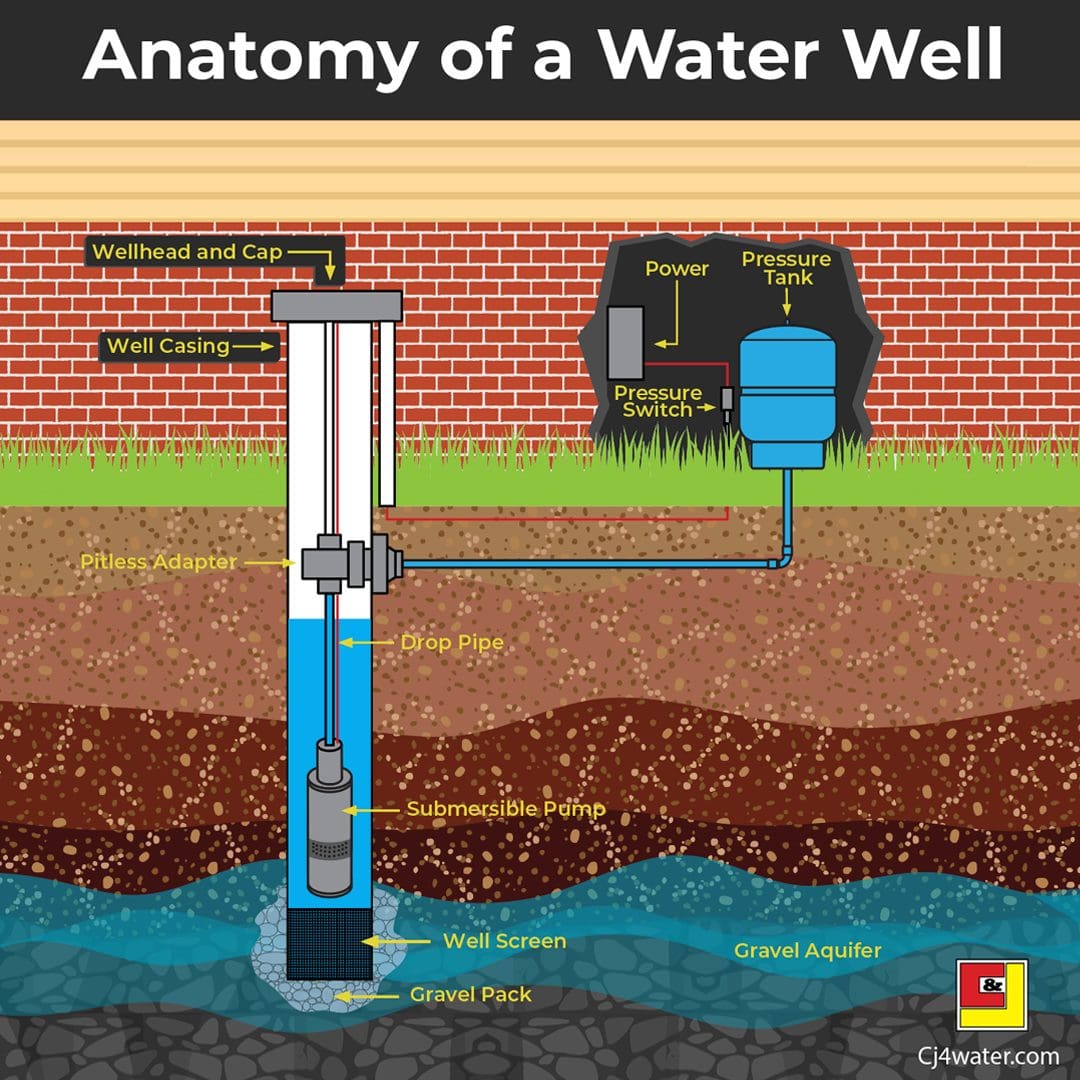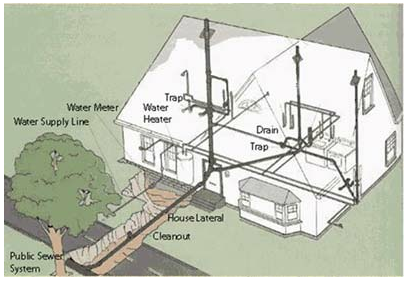Understanding The Anatomy of Your Home's Plumbing System
Understanding The Anatomy of Your Home's Plumbing System
Blog Article
Are you currently trying to find tips involving The Inner Workings of Your Home's Plumbing?

Recognizing exactly how your home's pipes system functions is important for each home owner. From supplying clean water for alcohol consumption, cooking, and showering to safely getting rid of wastewater, a well-kept pipes system is important for your family members's wellness and convenience. In this extensive overview, we'll check out the complex network that makes up your home's plumbing and deal tips on maintenance, upgrades, and taking care of common concerns.
Introduction
Your home's plumbing system is greater than just a network of pipelines; it's a complex system that ensures you have accessibility to clean water and reliable wastewater elimination. Knowing its elements and exactly how they interact can help you avoid costly repair work and make certain whatever runs smoothly.
Standard Components of a Plumbing System
Pipelines and Tubes
At the heart of your plumbing system are the pipelines and tubing that bring water throughout your home. These can be constructed from numerous materials such as copper, PVC, or PEX, each with its advantages in terms of durability and cost-effectiveness.
Fixtures: Sinks, Toilets, Showers, etc.
Components like sinks, toilets, showers, and tubs are where water is made use of in your house. Understanding how these components connect to the plumbing system assists in detecting problems and preparing upgrades.
Shutoffs and Shut-off Factors
Shutoffs regulate the circulation of water in your pipes system. Shut-off shutoffs are essential during emergency situations or when you require to make fixings, permitting you to separate parts of the system without interfering with water circulation to the whole house.
Supply Of Water System
Main Water Line
The main water line connects your home to the metropolitan supply of water or a personal well. It's where water enters your home and is dispersed to various fixtures.
Water Meter and Pressure Regulator
The water meter procedures your water use, while a stress regulatory authority makes sure that water streams at a risk-free pressure throughout your home's plumbing system, preventing damage to pipes and components.
Cold Water vs. Warm water Lines
Comprehending the distinction between cold water lines, which provide water straight from the main, and hot water lines, which lug warmed water from the water heater, helps in repairing and planning for upgrades.
Water drainage System
Drain Pipes Water Lines and Traps
Drain pipelines lug wastewater far from sinks, showers, and commodes to the sewage system or septic system. Catches stop drain gases from entering your home and likewise trap debris that can create clogs.
Ventilation Pipelines
Air flow pipelines enable air right into the water drainage system, stopping suction that might slow drainage and create catches to empty. Proper ventilation is crucial for keeping the stability of your pipes system.
Relevance of Proper Drainage
Making certain proper water drainage stops back-ups and water damages. Frequently cleaning drains pipes and keeping traps can prevent pricey repair services and expand the life of your plumbing system.
Water Heating Unit
Sorts Of Water Heaters
Hot water heater can be tankless or traditional tank-style. Tankless heating systems warm water on demand, while containers store heated water for prompt use.
How Water Heaters Attach to the Pipes System
Comprehending exactly how hot water heater attach to both the cold water supply and hot water circulation lines aids in identifying problems like insufficient warm water or leakages.
Upkeep Tips for Water Heaters
On a regular basis flushing your water heater to get rid of sediment, checking the temperature level setups, and examining for leaks can extend its lifespan and enhance energy performance.
Typical Plumbing Problems
Leakages and Their Causes
Leakages can happen because of aging pipelines, loose installations, or high water pressure. Attending to leakages without delay stops water damages and mold development.
Clogs and Clogs
Clogs in drains pipes and commodes are typically triggered by purging non-flushable items or a build-up of grease and hair. Utilizing drainpipe screens and being mindful of what decreases your drains pipes can protect against obstructions.
Signs of Pipes Troubles to Watch For
Low tide stress, slow-moving drains, foul odors, or uncommonly high water costs are signs of prospective pipes troubles that ought to be dealt with immediately.
Pipes Maintenance Tips
Routine Examinations and Checks
Schedule yearly plumbing evaluations to catch problems early. Seek signs of leaks, rust, or mineral build-up in taps and showerheads.
DIY Upkeep Tasks
Simple tasks like cleaning tap aerators, looking for bathroom leaks using dye tablets, or protecting subjected pipes in cold climates can prevent major plumbing issues.
When to Call an Expert Plumbing Technician
Know when a pipes concern calls for professional competence. Trying intricate repairs without correct understanding can bring about even more damages and higher repair work prices.
Updating Your Pipes System
Factors for Upgrading
Updating to water-efficient components or changing old pipelines can boost water top quality, minimize water expenses, and boost the worth of your home.
Modern Pipes Technologies and Their Advantages
Check out innovations like wise leakage detectors, water-saving commodes, and energy-efficient hot water heater that can conserve cash and lower ecological influence.
Expense Factors To Consider and ROI
Determine the upfront prices versus lasting financial savings when taking into consideration pipes upgrades. Numerous upgrades pay for themselves via lowered energy expenses and fewer repair work.
Environmental Impact and Preservation
Water-Saving Components and Home Appliances
Installing low-flow taps, showerheads, and commodes can substantially minimize water usage without sacrificing performance.
Tips for Lowering Water Usage
Simple behaviors like dealing with leakages quickly, taking shorter showers, and running complete lots of laundry and dishes can save water and lower your energy expenses.
Eco-Friendly Plumbing Options
Consider lasting pipes materials like bamboo for flooring, which is durable and environmentally friendly, or recycled glass for kitchen counters.
Emergency Preparedness
Actions to Take During a Plumbing Emergency situation
Know where your shut-off shutoffs are located and exactly how to turn off the water in case of a burst pipe or significant leak.
Importance of Having Emergency Calls Useful
Maintain get in touch with details for regional plumbings or emergency situation services conveniently offered for fast response throughout a plumbing situation.
DIY Emergency Situation Fixes (When Appropriate).
Momentary fixes like utilizing air duct tape to patch a dripping pipeline or placing a container under a dripping faucet can lessen damage till a professional plumbing professional arrives.
Verdict.
Understanding the composition of your home's pipes system empowers you to keep it efficiently, conserving time and money on fixings. By following regular upkeep routines and staying educated about contemporary pipes innovations, you can ensure your pipes system runs effectively for years ahead.
HOW YOUR PLUMBING SYSTEM WORKS
Which Pipes Do What?
Blue lines = fresh water supply entering the building
Red lines = hot water supply entering the building
Grey lines = pipes carrying waste away from the building and venting pipes carrying gases away from the building (through the roof)
YOUR MAIN PLUMBING SYSTEMS
There are two main plumbing systems that support your home s basic plumbing needs one that brings clean water into your home, and one that sends dirty water away from your home. Connected to the toilet, bath, shower, and other faucets in your home, these two systems keep your water flowing in the right directions.
ACCESSING FRESH WATER
Fresh and clean water is brought into your home through the main water supply line . Filtered through one pipe, this water is pressured to flow into the various fixtures in your home at any given time.
This water can be sourced from a well located on your property, a pond or river (mostly cottages), or, as in most cases, from the city s municipal water treatment centre. However, it is important to note that water that is untreated, such as the water siphoned from ponds or rivers, may not be safe to drink. Personal water supplies always need to be treated for hardness and contaminants before consumed.
MUNICIPAL WATER SUPPLIES
Improve taste and odour
Remove sediment
Eliminate hardness
Reduce chlorine
COLD WATER SUPPLY VS. HOT WATER SUPPLY
Cold water flows into your home or building through the service line, which then distributes hot or cold water to your fixtures. This line is most commonly run through a central column that runs floor to floor. Hot water runs in short and straight pipes as the longer the pipeline, the more heat that will be lost in the transfer. Having shorter pipes also allows residents to access hot water more quickly.
WASTE WATER SYSTEM
Your wastewater system is divided into two parts pipes that send wastewater away from your home and venting pipes that send sewer gas away from your home. Sewage water travels through pipes that flush the water and waste towards local sewers that are operated and managed by your city or town. Most sewer systems rely on gravity to move the wastewater to where it needs to go.
The further away from your toilet or sink, the larger wastewater pipes become. This allows for waste to be disposed of from various parts of your home or business at once without pipe blockages. The angle and flow of these pipes are also essential for keeping your waste pipes clear of build up.
https://harrisplumbing.ca/how-your-home-plumbing-system-works/

HOW YOUR PLUMBING SYSTEM WORKS
Which Pipes Do What?
YOUR MAIN PLUMBING SYSTEMS
There are two main plumbing systems that support your home s basic plumbing needs one that brings clean water into your home, and one that sends dirty water away from your home. Connected to the toilet, bath, shower, and other faucets in your home, these two systems keep your water flowing in the right directions.
ACCESSING FRESH WATER
Fresh and clean water is brought into your home through the main water supply line . Filtered through one pipe, this water is pressured to flow into the various fixtures in your home at any given time.
This water can be sourced from a well located on your property, a pond or river (mostly cottages), or, as in most cases, from the city s municipal water treatment centre. However, it is important to note that water that is untreated, such as the water siphoned from ponds or rivers, may not be safe to drink. Personal water supplies always need to be treated for hardness and contaminants before consumed.
MUNICIPAL WATER SUPPLIES
COLD WATER SUPPLY VS. HOT WATER SUPPLY
Cold water flows into your home or building through the service line, which then distributes hot or cold water to your fixtures. This line is most commonly run through a central column that runs floor to floor. Hot water runs in short and straight pipes as the longer the pipeline, the more heat that will be lost in the transfer. Having shorter pipes also allows residents to access hot water more quickly.
WASTE WATER SYSTEM
Your wastewater system is divided into two parts pipes that send wastewater away from your home and venting pipes that send sewer gas away from your home. Sewage water travels through pipes that flush the water and waste towards local sewers that are operated and managed by your city or town. Most sewer systems rely on gravity to move the wastewater to where it needs to go.
The further away from your toilet or sink, the larger wastewater pipes become. This allows for waste to be disposed of from various parts of your home or business at once without pipe blockages. The angle and flow of these pipes are also essential for keeping your waste pipes clear of build up.
https://harrisplumbing.ca/how-your-home-plumbing-system-works/
We were shown that editorial on Anatomy of a House: Understanding the Components through an associate on another blog. Appreciated our content? Please quickly share it. Let somebody else discover it. We truly appreciate reading our article about .
This Post Report this page